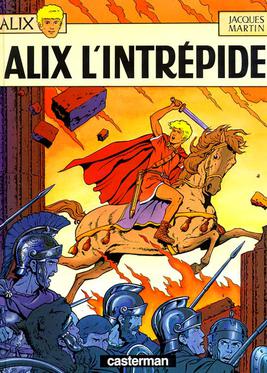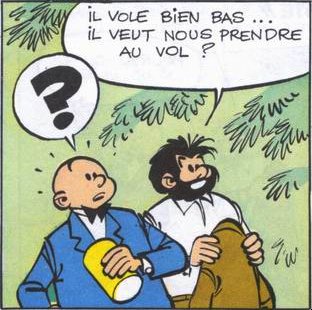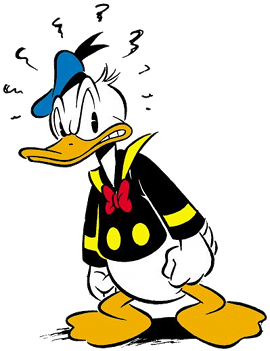
The Seekers is a British comic strip drawn by John M. Burns, written by Les Lilley, succeeded by Phillip Douglas and Dick O'Neil. The strip ran from 1966 to 1971 in The Daily Sketch .

The Seekers is a British comic strip drawn by John M. Burns, written by Les Lilley, succeeded by Phillip Douglas and Dick O'Neil. The strip ran from 1966 to 1971 in The Daily Sketch .
The main characters, Susanne Dove and Jacob Benedick, are two preferred secret agents employed by Una Frost, director of "The Seekers", an elite agency of missing persons retrieval. Their investigations frequently lead to adventures connected to the sex industry, exploiting the attractiveness of both detectives, and usually leading to the downfall of sexual predators and oppressors. [1]
The Seekers began publication on 2 May 1966 in The Daily Sketch. [1] [2] The concept of the strip bears some resemblance to another strip Burns later drew for a brief period, Modesty Blaise . The female characters were consistently drawn in an enticing manner, indicating Burns' evident intent to challenge the limits of the daily British newspaper strip conventions of the times. [1] The initial writer Les Lilley was succeeded by Phillip Douglas starting with episode 14, The Missing Golfers, occasionally aided by Dick O'Neil, who wrote one story, The Curse of the One-Eyed Sailor.
The strip ended on 10 May 1971, abandoned due to its lack of lasting success. [1] It enjoyed some popularity in Italy where it was known as I Segugi, and the Scandinavian countries, serialised as Spårhundarna in Sweden, Sporhundene in Norway and Denmark, and Vainukoirat in Finland, and as Tragači it was serialized in Yugoslavia in at least three different magazines during the 1970s and 1980s. The name, Seekers, translates to Bloodhounds in Swedish, Norwegian, Danish and Finnish publications of the strip.

| № | Title | Author | Strips |
|---|---|---|---|
| 1 | The Boneyard Club | Les Lilley | M103–M180 |
| 2 | The Missing Groom | M181–M252 | |
| 3 | Red Elibank | M253–N12 | |
| 4 | The Bookman Vanishes | N13–N84 | |
| 5 | The Collection | N85–N155 | |
| 6 | The Irish Caper | N156–N233 | |
| 7 | Jamaican Joyride | N234–N309,P1-P2 | |
| 8 | John Silver | P3–P83 | |
| 9 | The Highest Bidder | P84–P169 | |
| 10 | The Missing Star | P170–P254 | |
| 11 | Lost Monastery | P255–P278,Q1-Q60 | |
| 12 | The Off-Beat Case | Q61–Q120 | |
| 13 | Art Theft | Q121–Q198 | |
| 14 | The Missing Golfers | Phillip Douglas | Q199–Q276 |
| 15 | A Matter of Life and Death | Q277–Q309,R1-R45 | |
| 16 | Where’s Una? | R46–R117 | |
| 17 | The Man Who Died Twice | R118–R178 | |
| 18 | The Boy With the Golden Boots | R179–R239 | |
| 19 | Hoop of Fire | R240–R305,T1-T8 | |
| 20 | The Day the Birds Dropped Dead | T9–T68 | |
| 21 | The Curse of the One-Eyed Sailor | Dick O'Neil | T69–T107 |
| 22 | Title missing | Phillip Douglas | T109–T125 |
| 23 | Wheels of Fate | T126–T185 | |
| 24 | The Tracy Madison Affair | T186–T245 | |
| 25 | Goddess of the Seven Moons | T246–T317 | |
| 26 | Legs on Broadway | T318–T365 | |
| 27 | Dead Girls Tell | T366–T413 |

Dick Tracy is an American comic strip featuring Dick Tracy, a tough and intelligent police detective created by Chester Gould. It made its debut on Sunday, October 4, 1931, in the Detroit Mirror, and it was distributed by the Chicago Tribune New York News Syndicate. Gould wrote and drew the strip until 1977, and various artists and writers have continued it. Dick Tracy has also been the hero in a number of films, including Dick Tracy in which Warren Beatty played the lead in 1990. Tom De Haven praised Gould's Dick Tracy as an "outrageously funny American Gothic", while Brian Walker described it as a "ghoulishly entertaining creation" which had "gripping stories filled with violence and pathos".

The Famous Five is a series of children's adventure novels and short stories written by English author Enid Blyton. The first book, Five on a Treasure Island, was published in 1942. The novels feature the adventures of a group of young children – Julian, Dick, Anne, George and their dog Timmy.
Disney comics are comic books and comic strips featuring characters created by the Walt Disney Company, including Mickey Mouse, Donald Duck and Uncle Scrooge.

The Phantom is an American adventure comic strip, first published by Lee Falk in February 1936. The main character, the Phantom, is a fictional costumed crime-fighter who operates from the fictional African country of Bangalla. The character has been adapted for television, film and video games.
Donaldism is the fandom associated with Disney comics and cartoons. The name refers to Donald Duck and was first used by author Jon Gisle in his essay "Donaldismen" from 1971 and expanded in his book Donaldismen in 1973.

Secret Agent X-9 is a comic strip created by writer Dashiell Hammett and artist Alex Raymond. Syndicated by King Features, it ran from January 22, 1934 until February 10, 1996.

Valiant was a weekly British comics periodical published by Fleetway Publications and later IPC Magazines from 4 October 1962 to 16 October 1976. A boys' adventure comic, it debuted numerous memorable characters, including Captain Hurricane, The Steel Claw and Mytek the Mighty. Valiant lasted for 712 issues before being merged with stablemate Battle Picture Weekly.
Adamson Awards is a Swedish award awarded to notable cartoonists, named after the famous Swedish comic strip "Adamson". There are two award categories: International and Swedish cartoonist.
Invisible Scarlet O'Neil is a 1940–1956 American comic strip written and drawn by Russell Stamm, who had previously been an assistant to Chester Gould on Dick Tracy. The strip focused on Scarlet O'Neil, a plainclothes superhero with the power of invisibility.
TV Century 21, later renamed TV21, TV21 and Tornado, TV21 and Joe 90, and TV21 again, was a weekly British children's comic published by City Magazines during the latter half of the 1960s. Originally produced in partnership with Gerry and Sylvia Anderson's Century 21 Productions, it promoted the company's many science-fiction television series. The comic was published in the style of a newspaper of the future, with the front page usually dedicated to fictional news stories set in the worlds of Fireball XL5, Stingray, Thunderbirds, Captain Scarlet and the Mysterons and other stories. The front covers were also in colour, with photographs from one or more of the Anderson series or occasionally of the stars of the back-page feature.

Alix, or The Adventures of Alix, is a Franco-Belgian comics series drawn in the ligne claire style by Jacques Martin. The stories revolve around a young Gallo-Roman man named Alix in the late Roman Republic. Although the series is renowned for its historical accuracy and stunning set detail, the hero has been known to wander into anachronistic situations up to two centuries out of his era. The stories unfold throughout the reaches of the Roman world, including the city of Rome, Gaul, the German frontier, Mesopotamia, Africa and Asia Minor. One voyage goes as far as China.
Pyton was a Norwegian comic book series which was produced by the company Gevion, and afterwards Bladkompaniet, between the years 1986 until 1996. An anthology magazine with no major main character, its style of humor focused mostly on satiric and toilet humour, including sexual, toilet, and farting jokes. Most of Pyton's material was produced by the magazine's own staff, but a handful of foreign comics also appeared in the magazine, including Gary Larson's The Far Side, and the German comic Werner.

Tif et Tondu is a Belgian comic strip about a duo of private investigators, originally created, written and drawn by Fernand Dineur. Several artists and writers have worked on the series but the most popular version is that drawn by Will, with writers Maurice Rosy, Maurice Tillieux, and Stephen Desberg. The strip first started in 1938 and lasted until 1997, just one year short of its 60th birthday.
Notable events of 1966 in comics. See also List of years in comics.

Donald Fauntleroy Duck is a cartoon character created by The Walt Disney Company. Donald is an anthropomorphic white duck with a yellow-orange bill, legs, and feet. He typically wears a sailor shirt and cap with a bow tie. Donald is known for his semi-intelligible speech and his mischievous, temperamental, and pompous personality. Along with his friend Mickey Mouse, Donald was included in TV Guide's list of the 50 greatest cartoon characters of all time in 2002, and has earned a star on the Hollywood Walk of Fame. He has appeared in more films than any other Disney character, and is the most published comic book character in the world outside of the superhero genre.

Eric de Noorman was a Dutch comic strip, published in text comic format, and drawn by Hans G. Kresse from 1946 until 1964. The stories featured a Viking king, Eric, and his adventures overseas. Together with Kapitein Rob and Tom Poes, Eric de Noorman is widely considered to belong to the Big Three in Dutch comics history. Kresse's well documented stories and high quality drawing are praised and have influenced many other European comics artists. Eric de Noorman is one of the few Dutch comics to gain popularity in foreign translations. In the Netherlands, it was published in Het Vaderland, De Nieuwe Haarlemsche Courant and Tom Poes Weekblad, in Flanders in Het Laatste Nieuws and De Nieuwe Gazet, in Wallonia in Le Soir. The comic has been translated into French, Danish, Finnish, German, Spanish, Swedish, Portuguese and English. From 1948 on the stories were published in oblong format books at the low price of 75 cent.
Blas Gallego is a Spanish artist, painter and illustrator with a career spanning six decades. He has created and drawn comic books and strips, book covers, film posters, role-playing game cards, and portraits, among other formats, for publishers in tens of countries. Gallego is internationally known for his specialization in erotic art.
Celebrity comics are comics based on the fame and popularity of a celebrity. They are a byproduct of merchandising around a certain media star or franchise and have existed since the mass media and comics came into existence in the 19th century. Celebrity comics are usually not held in high esteem by critics, because of their purely commercial nature. They are solely created to capitalize on media trends and therefore published so quickly and cheaply that drawings and narratives tend to be of very low quality.
The National Newspaper Syndicate, originally known as the John F. Dille Co., was a syndication service that operated from 1917 to c. 1984. It was founded by Chicago businessman John F. Dille and specialized in comic strips and gag cartoons. It also carried advice columns, such as Paul Popenoe's "Modern Marriage." It is most well known for syndicating Buck Rogers, considered by many to be the first adventure comic strip.